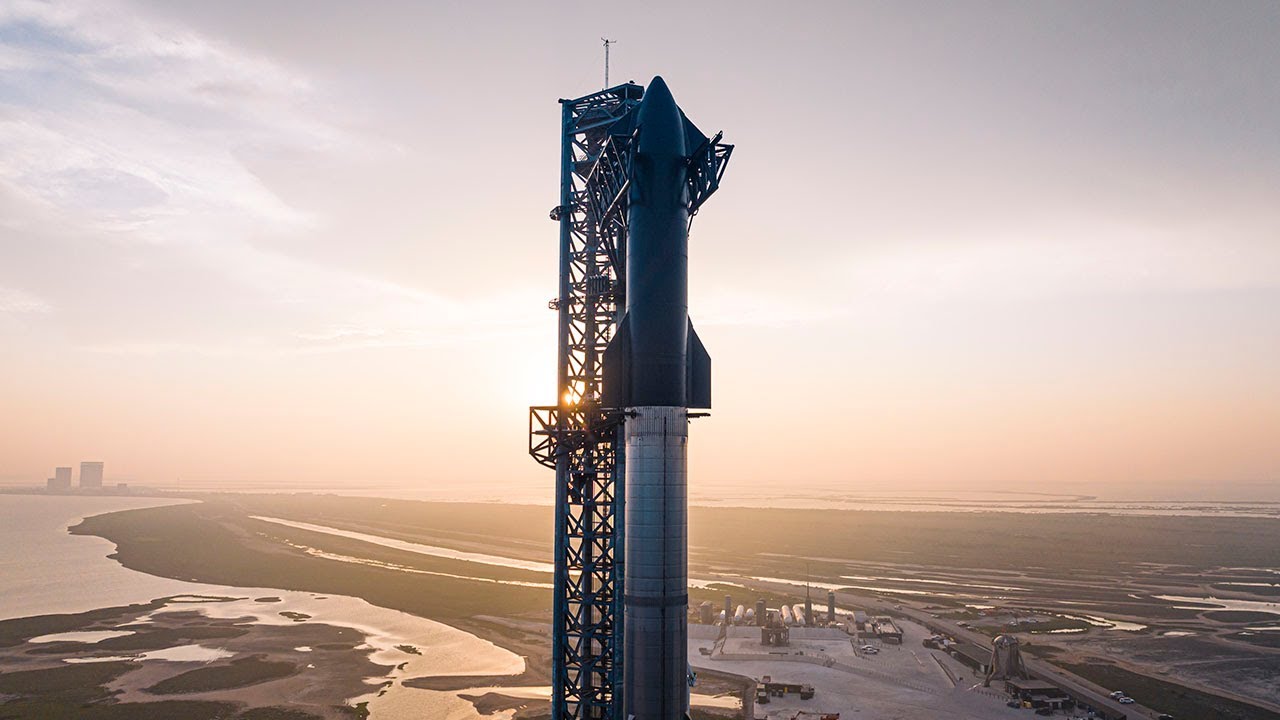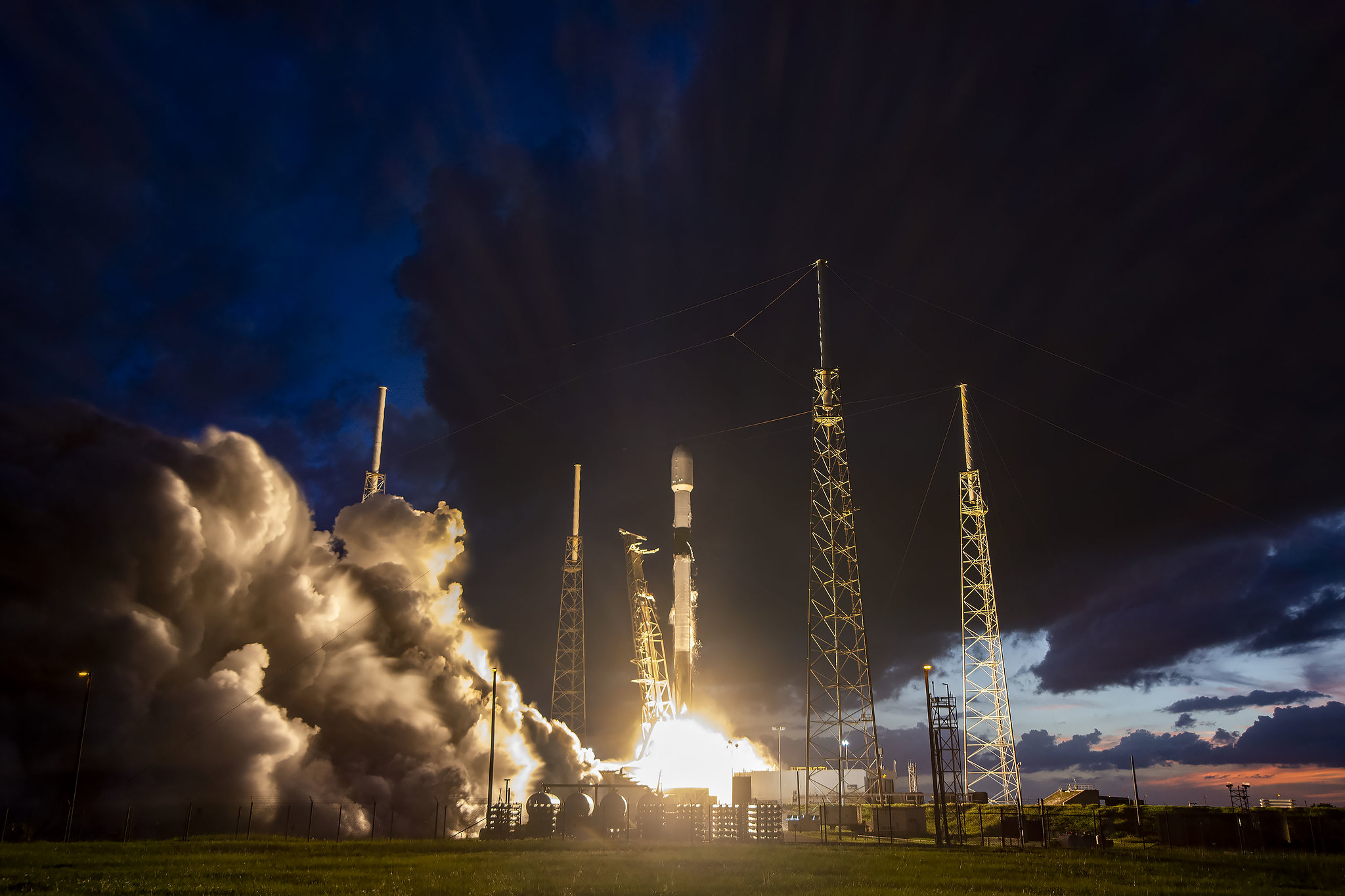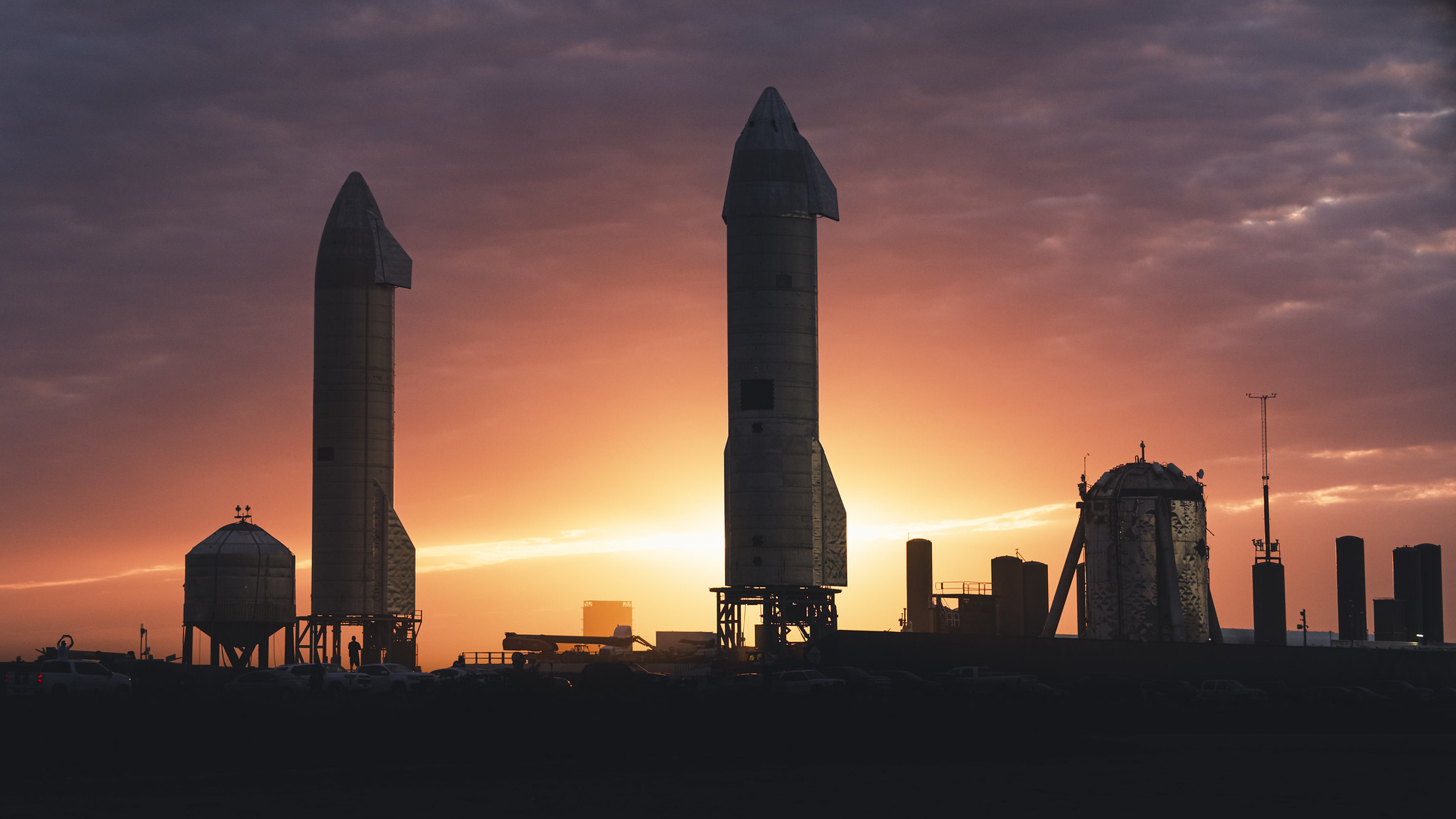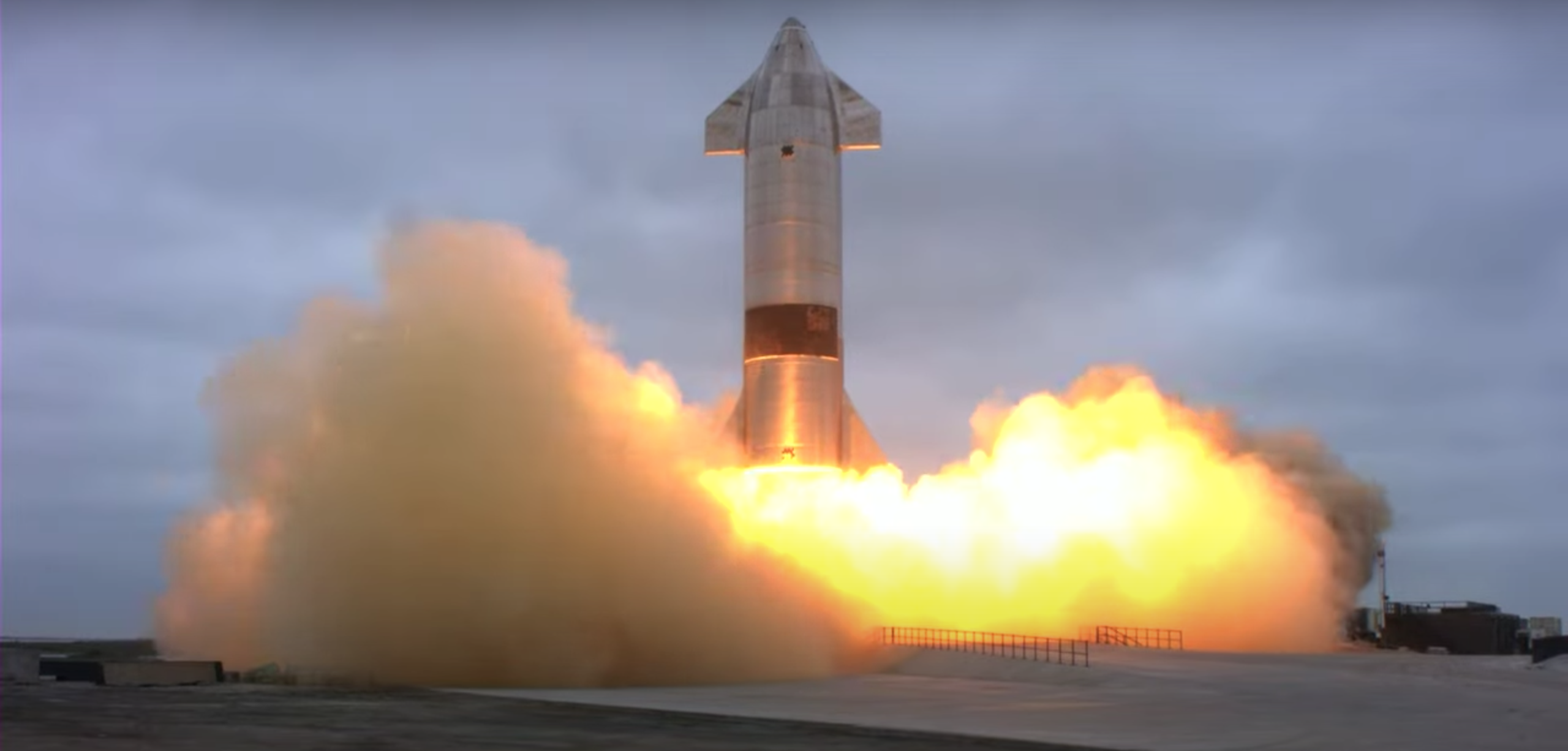
SpaceX Starship Orbital Test Flight
Published on Thu, 20.04.2023 – 23:30 CEST in Missions, covering SpaceXSince its founding in 2002, SpaceX has made space history time and again. With the launch of the Starship, the largest and most powerful rocket of all time, a new chapter is added. Even if not everything worked out as planned.
The first launch attempt was to take place as early as April 17, 2023. Due to a frozen valve, however, SpaceX refrained from an actual launch. Nevertheless, the countdown ran down to T -40 seconds, and the test was unceremoniously declared a wet dress rehearsal. A new launch window was scheduled 48 hours later, on April 19. Within the community, however, it was speculated that April 20 was the more likely date. That's because, in American spelling, 4/20 is a reference to the code word commonly used in cannabis culture for the consumption of marijuana. And anyone who knows Elon Musk knows he's not averse to that. Ultimately, the space community should be proven right.
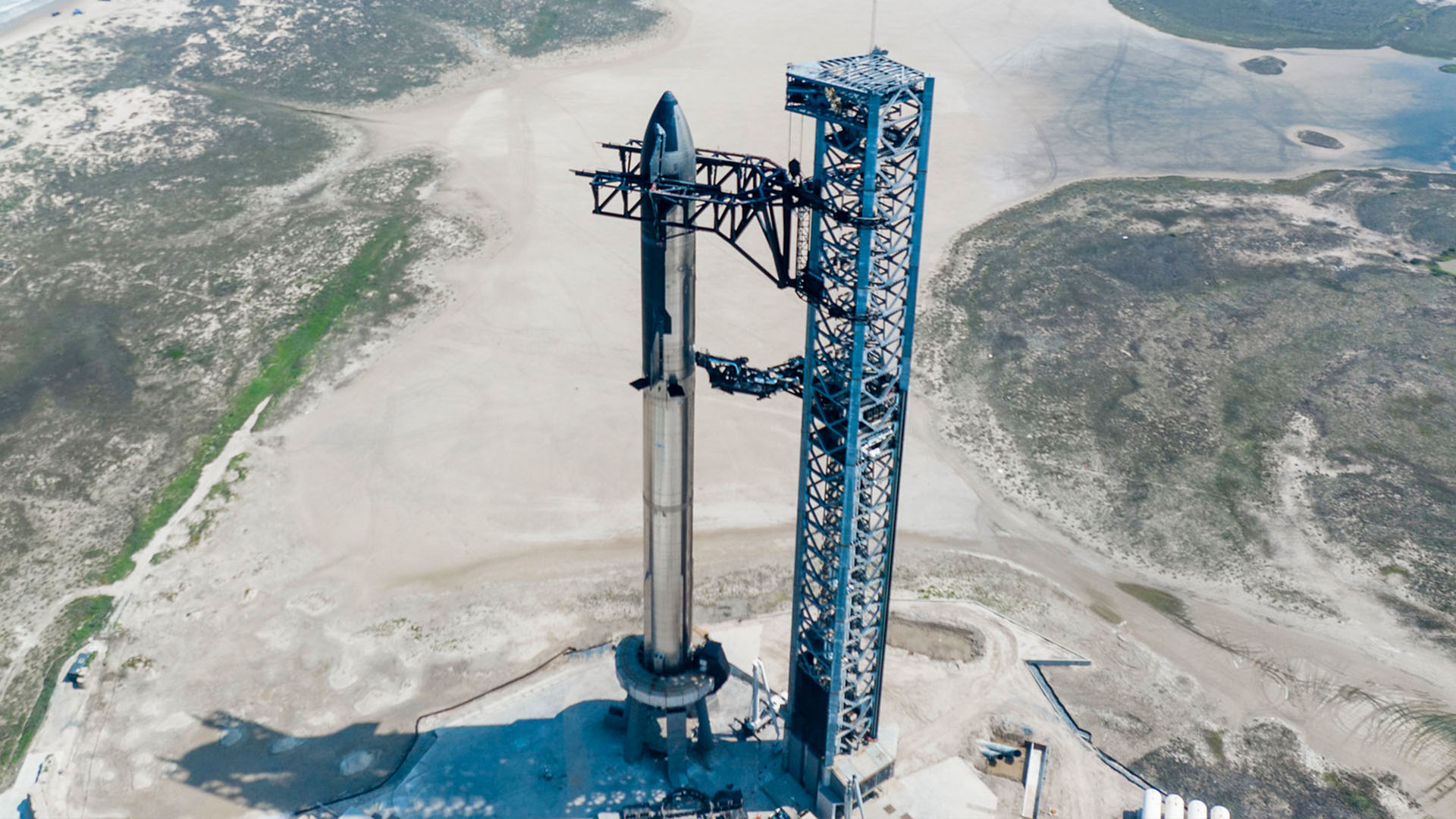
© Official SpaceX Photos
62 minutes launch window
According to SpaceX, the launch window for the Orbital Test Flight was open from 15:28 to 16:30 CEST (08:28 to 09:30 local time). Contrary to previous test flights, everything also went quite quickly this time. After a short intro movie, the live coverage started. The countdown was already at T -00:33:27. One minute before the launch, the SpaceX staff erupted in jubilation for the first time. This was also the case when the 40-second mark was passed. However, after counting down to T -00:00:26, the countdown jumped back to T -00:00:41, ran down to 26 seconds again, and then jumped back up to 41 seconds. Thus, a few seconds later, disillusionment set in briefly, as the flight director had ordered the countdown to be stopped (hold).
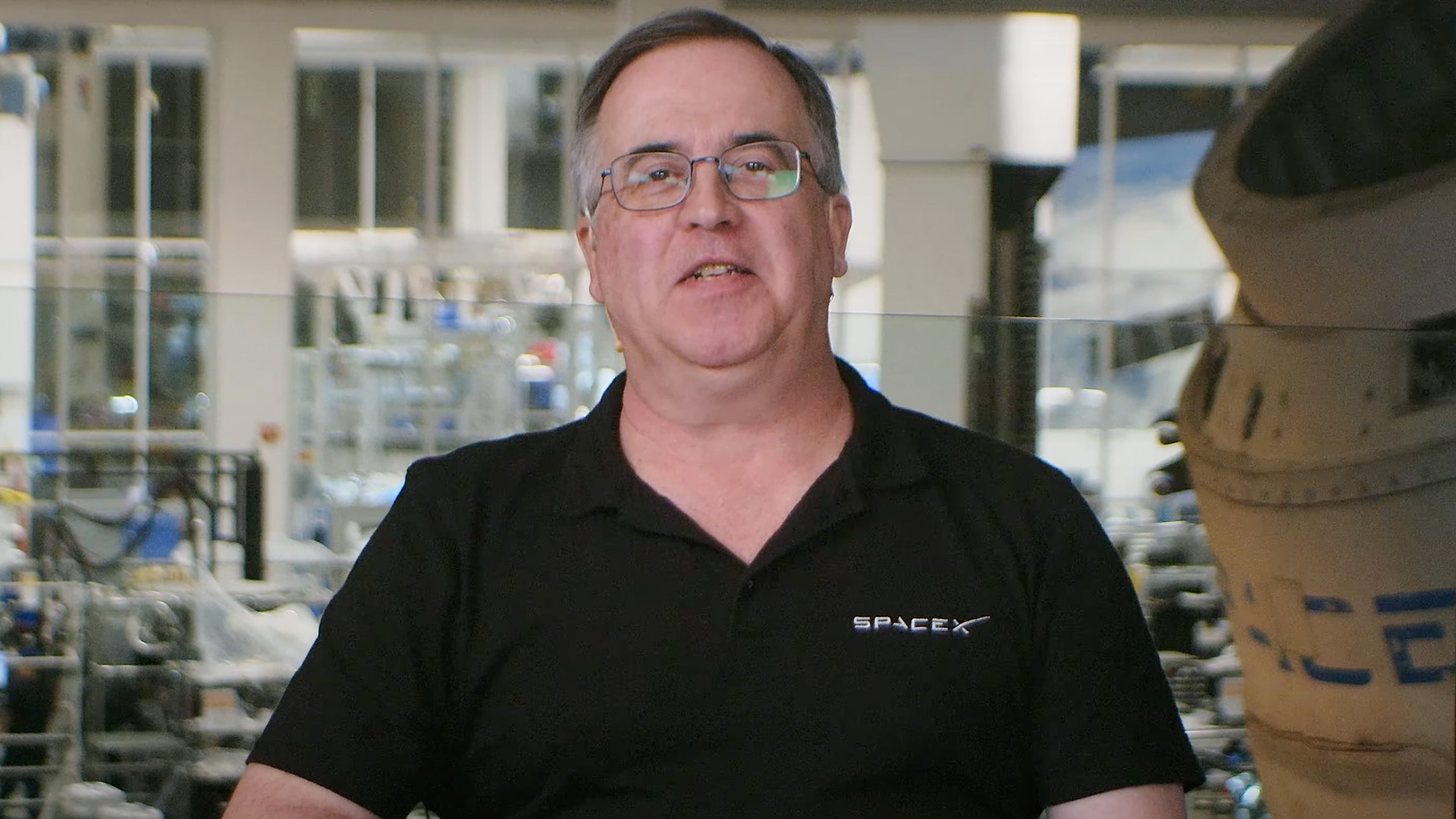
© SpaceX
Commentating on the SpaceX livestream was John L. Insprucker. The US aerospace engineer and retired Air Force colonel works at SpaceX as Principal Integration Engineer. In his usual relaxed manner, the 66-year-old asked the almost 1 million viewers of the stream for a little patience. What followed were 126 anxious seconds in which nothing could be heard except for background noise from SpaceX headquarters in Hawthorne (California, USA). Insprucker reported back with the information that there were a number of problems that they were currently working on solving.
Second attempt of the Orbital Test Flight
Among other things, there were problems with the pressurization of the booster (super heavy, first stage). This took a little longer than planned, but this was not unusual. To increase the pressure, the countdown was stopped 40 seconds before takeoff, and the problem seemed to have been solved. At the same time, work was underway on purging the second stage - the actual Starship. Even as John Insprucker announced that they would know shortly if the problem was fixed and the countdown would resume, cheers erupted again in Hawthorne. But it was unclear at that point whether the launch would actually take place.

© SpaceX
In contrast to the Falcon 9, however, a longer hold is possible. While the propellants (RP-1, LOX) in SpaceX's workhorse heat up quickly, up to 15 minutes is no problem for the Starship (CH4, LOX). This time window was not even remotely utilized. Just about five minutes after the hold, the countdown continued. To our great surprise, it began with T -31 seconds almost where it had left off before.
Liftoff in slow motion
It took around seven seconds after ignition of the engines to see that Starship was actually moving vertically. With more than twice the thrust of the Saturn V, Starship was the most powerful rocket of all time. As usual, SpaceX displayed telemetry data. A few meters above the launch pad in Boca Chica, Texas, it was already clear that only 29 of the booster's 33 Raptor engines were running. However, the 230 tons of thrust per engine were sufficient to propel the 5,000-ton, 120-meter-high rocket into space.

© SpaceX
Another engine failed 40 seconds after launch, and at an altitude of 5 km (T +00:01:01), one more failed. A few seconds later, the Starship passed Max Q, a particularly critical point in space travel. This is because during acceleration the atmosphere in front of the rocket becomes more and more compressed (dynamic pressure). Max Q is therefore the point at which the maximum aerodynamic load acts on a rocket.
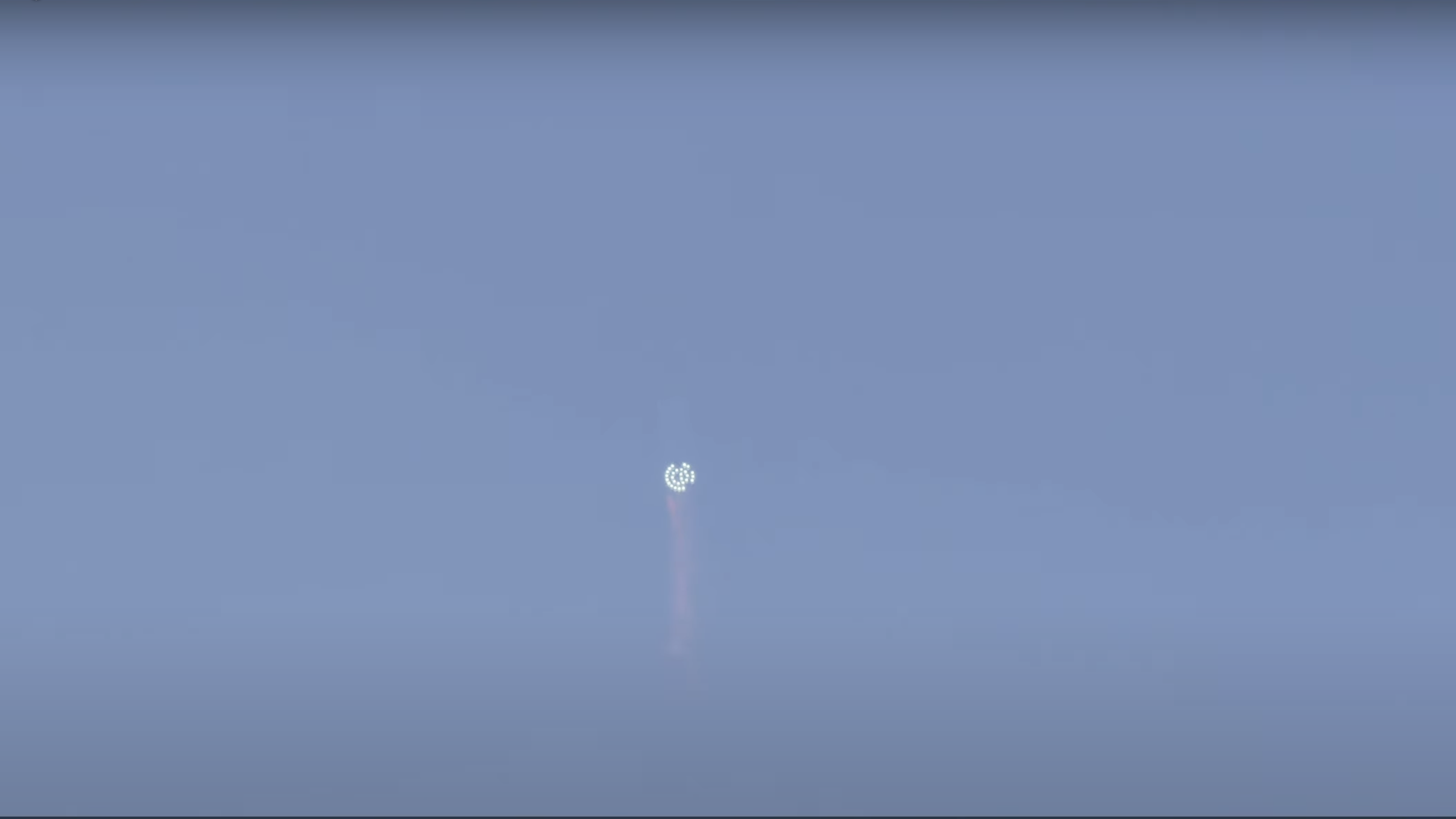
© SpaceX
Critical point of the mission: stage separation
Until about two and a half minutes after launch, the test flight of the 120-meter-high rocket went largely according to plan. Next up was stage separation, also a critical point. SpaceX had already learned the hard way here during the development of the Falcon rocket, because it did not work as planned in the first models. As one of SpaceX's first and most important employees, Hans Königsmann, explained in a presentation in 2022, many parameters have to be coordinated. For example, if the engines of the first stage are not throttled back in time, it will collide with the second stage after separation. This is comparable to a rear-end collision in a car. Of course, the separation itself also has to work.
Anomaly during Orbital Test Flight
But this is where the Orbital Test Flight revealed a problem. Two minutes and 15 seconds after takeoff, the cameras switched to the onboard perspective. But instead of a successful stage separation and the subsequent ignition of the Starship's engines, an anomaly appeared. As could be seen in the split screen, the flip maneuver was initiated, with which actually only the booster was supposed to fly back in the direction of Boca Chica.
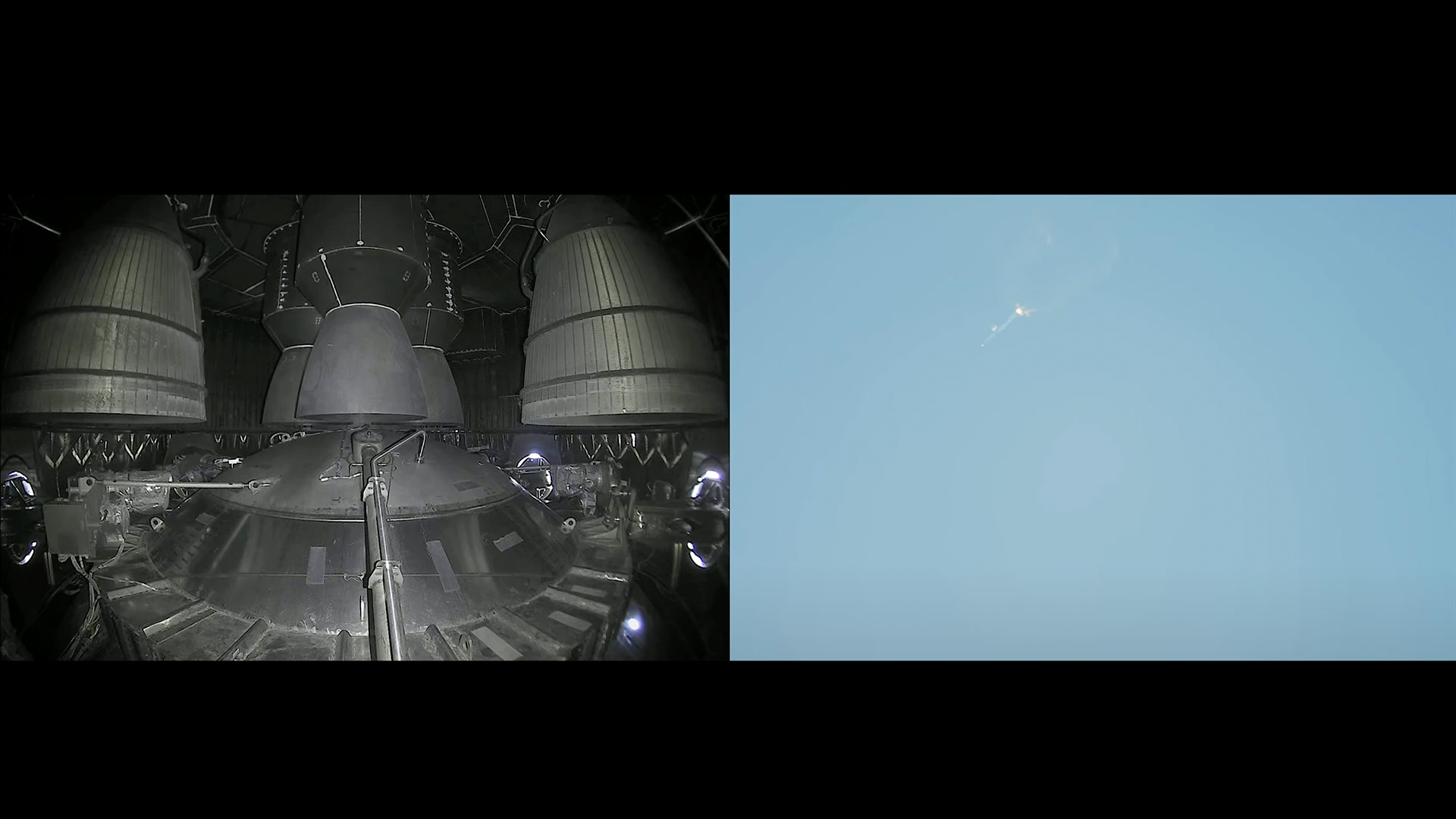
© SpaceX
Instead, the entire system "flew" a "loop". Until then, there was hope that separation would occur after all. But after the Starship reached a maximum altitude of 39 km, another "loop" followed. "It looks like we saw the start of a flip but obviously we are seeing from the ground cameras the entire starship stack continuing to rotate. We should have had separation by now. Obviously this does not appear to be a nominal situation," John Insprucker commented this phase.
It does appear to be spinning, but I do want to remind everyone, that everything after clearing the tower was icing on the cake.
Kate Tice, Quality Systems Engineering Managerin, SpaceX
At an altitude of 29 km, the Starship's flight termination system triggered after 3 minutes and 59 seconds. As seen on videos, the Super Heavy and Booster appear to have been detonated separately in the process. Although the Orbital Test Flight ended relatively quickly, this milestone was celebrated frenetically by the crew.
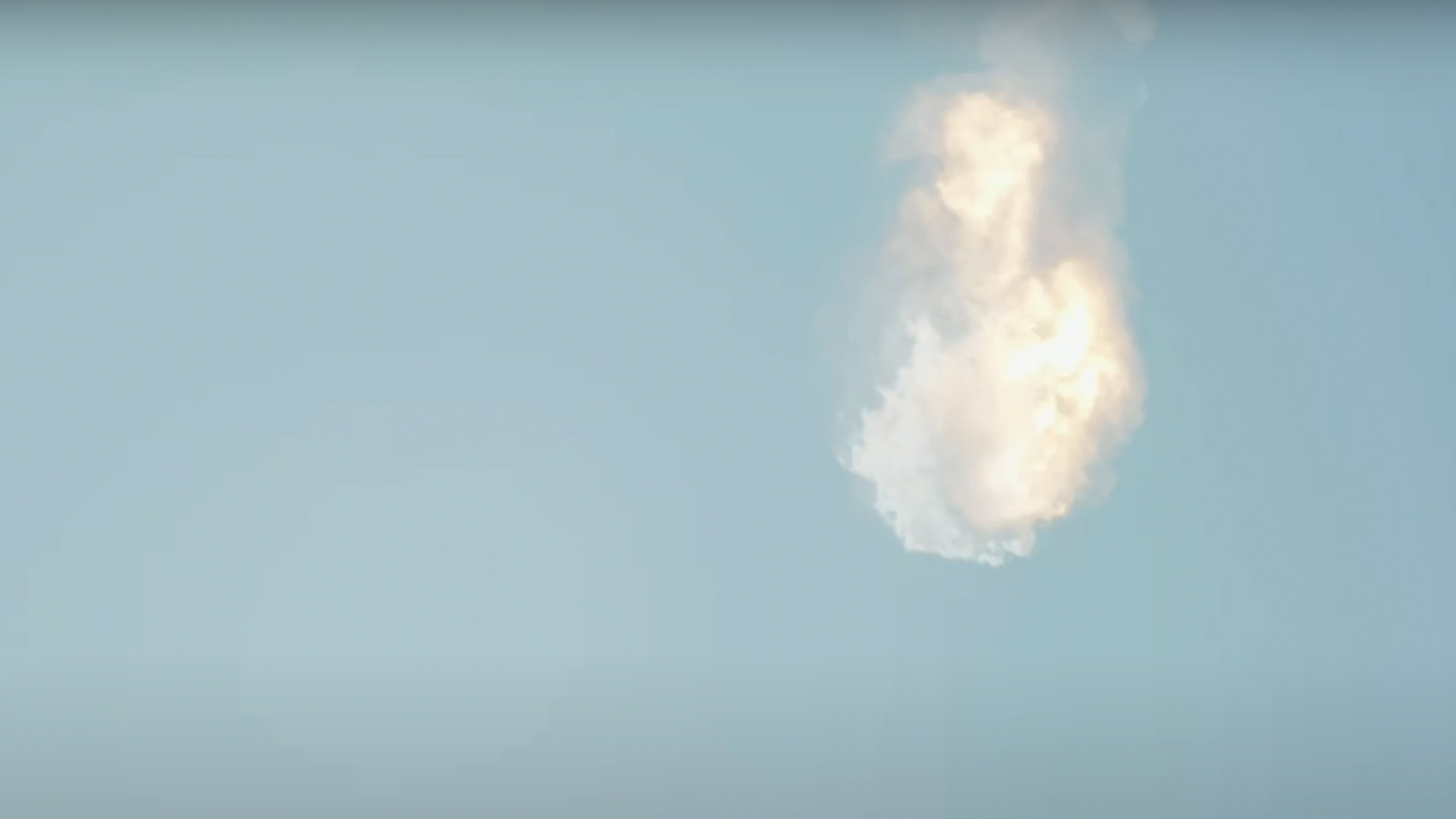
© SpaceX
Congratulations to SpaceX, Sobering in Europe
In Germany, the test flight was also received positively by experts. Matthias Wachter, managing director of the NewSpace Initiative (BDI), congratulated SpaceX on the milestone on LinkedIn: "It was impressive and the beginning of a new era - even if the rocket exploded after four minutes. The size and 100% reusability will further reduce transportation costs and open up new possibilities. The door to the stars has been opened even further for mankind today."
“WE ARE GOING TO MARS!”
Sabine von der Recke (member of the Management Board of OHB System AG) was on site in Boca Chica. She also writes on LinkedIn under the headline WE ARE GOING TO MARS: "Starship is changing space travel, and today a very decisive step has been taken into this new world. It was an almost surreal experience to stand on the beach in southern Texas and watch and hear this insane rocket take off." As she points out, she is impressed by the absolute dedication of the team and their shared enthusiasm for the company's goal of traveling to Mars. She continues, "The fact that the mission ended with an explosion doesn't change the fact that the stage was set today for a new, different future in space travel-and the explosion didn't change the frenetic cheering of everyone in attendance."
One man's joy, another man's sorrow - Starship vs. Ariane 6
Niklas Nienaß, member of the European Parliament, shed light on both sides of the successful test flight in a press release. "The launch of Starship is without a doubt a historic milestone for global spaceflight," says Green Party MEP Niklas Nienaß. The powerful heavy-lift rocket is said to be able to carry more than 100 tons of cargo. "This sets new standards," Nienaß said. For all the applause for Musk's giant project, one downer remains from a European perspective, he said: "Once again, we're just watching a big player set a milestone in space travel." And more: these days, according to media reports, the EU had to inquire with Musk's company SpaceX to be able to launch its European navigation satellites Galileo. A launch with its own Ariane rocket system keeps getting postponed for technical reasons.
Trust in NewSpace pays off
Nevertheless, the fact that SpaceX has opened a new chapter in the history of space travel with the Starship's Orbital Test Flight is no coincidence. After all, the journey to this point took more than two decades and cost billions of dollars. It is to be hoped that Europe will also learn from this launch attempt. Because it became clear once again that risk-taking and trust in the capabilities of NewSpace companies pay off. With the Microlauncher Competition, Germany at least has shown that it has recognized the signs of the times. The first launch of a German microlauncher by Isar Aerospace is already planned for the end of 2023. And if everything works out, we too will have every reason to celebrate - and make space history as well.
